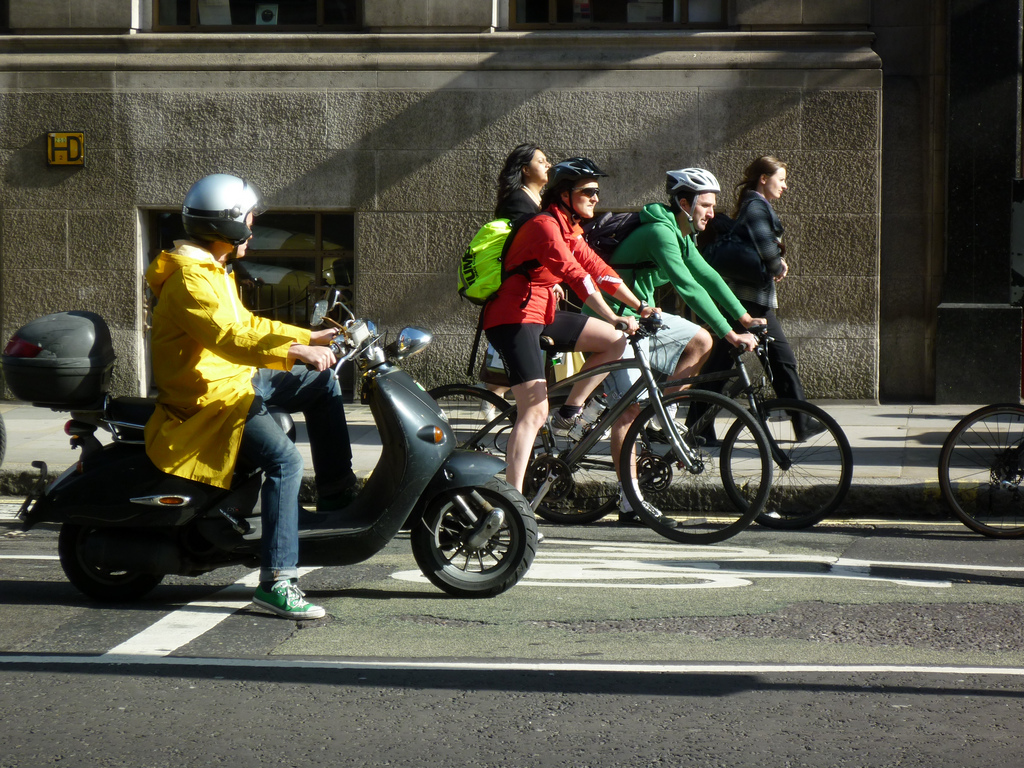
My home state, Indiana, recently became the 16th state to pass a “dead red” law. The law addresses a common problem that motorcycle and bicycle riders face: when they approach a traffic signal controlled by a weight sensor, they’re not heavy enough to trigger the light to change. So, they have to either break the law by driving through a red light, or wait for a heavier car to come along behind them. The new law authorizes these riders to proceed cautiously through a red light after stopping for two minutes.
I admit that this law seems, on its face, kind of boring; it passed through Indiana’s legislature easily and is not too politically controversial. But there’s a lot going on here in terms of the relationship between law and technology. Law and technology often get posited as being alternative means of regulating an individual (Lessig’s modalities diagram is probably the fundamental statement of this). But many new modes of regulation involve a mix of legal rules and technological tools, operating in interdependent layers. The dead red rule makes this super clear. Consider how many layers of law and technology we’re dealing with here:
- The cyclist wants to cross the street, but has to wait because of the traffic law.
- This traffic law gets instantiated in some technological artifacts (the traffic light and the weight sensor).
- In consideration of the fact that the law/technology hybrid is acting inefficiently, we make another law, the dead red statute, that sometimes allows you to violate the original law as it gets implemented through the technology.
- Presumably, one of the things that will be used to enforce the dead red law is technology again — red-light cameras and the like — that municipalities use to identify and punish violators.
The dead red is a good example of what Helen Nissenbaum has previously called the “handoff” between law and technology. The idea of the handoff is that we essentially pass the baton of regulation back and forth between legal and technical systems in an effort to make enforcement more perfect — keeping people from doing things we don’t want them to do through a combination of legal prohibitions and technical obstacles.
This law/tech layering is the kind of thing I think we’re going to see a lot more of in the coming years, as monitoring technologies evolve and become more enmeshed in legal enforcement systems. In the worst cases, these hybrid regulation systems create “total control solutions” that leave little room for individual freedom to tinker. Hybrids that fall into this category include things like access control technologies coupled with legal anti-circumvention provisions (as in the Digital Millennium Copyright Act), or provisions like those in the Computer Fraud and Abuse Act that prohibit exceeding authorized access to computers.
But in the best cases, this layering allows law and technology to work as checks on each other, that counterbalance the disadvantages inherent in each, in order to create a more efficient and fair system. And this is what’s interesting about the dead red case. It’s rare to see a law/tech hybrid that actually seems to create more freedom and efficiency for users (here, bike and motorcycle riders), but the dead red does (on its face at least) appear to be such a case. Clearly, the circumstances at issue in the traffic vs. copyright situation are really different — most obviously, no one stands to obviously benefit from making cyclists wait longer at traffic lights — but the case does at least demonstrate the potential for law/tech hybrids to broaden, rather than constrain, individual freedom.